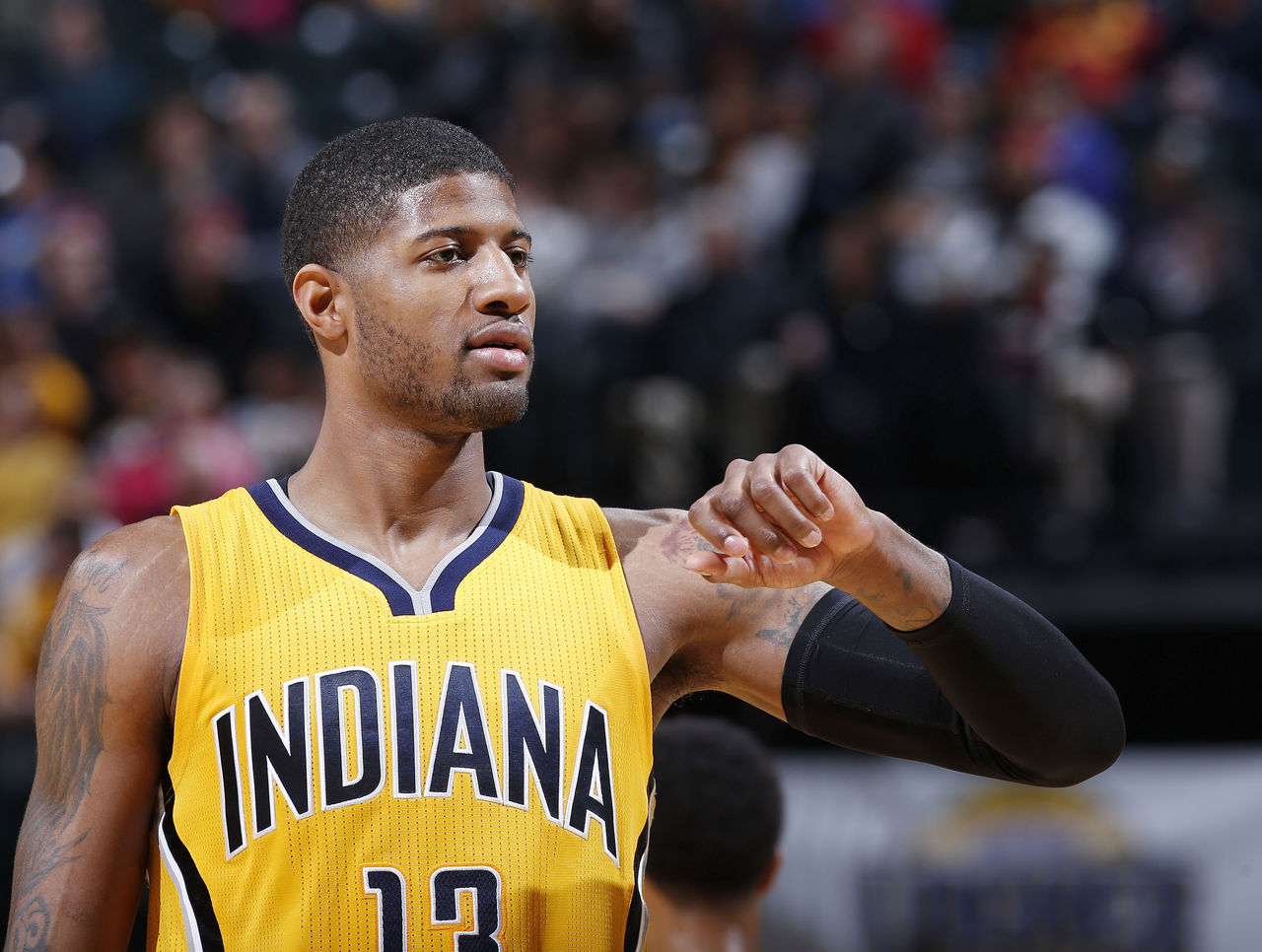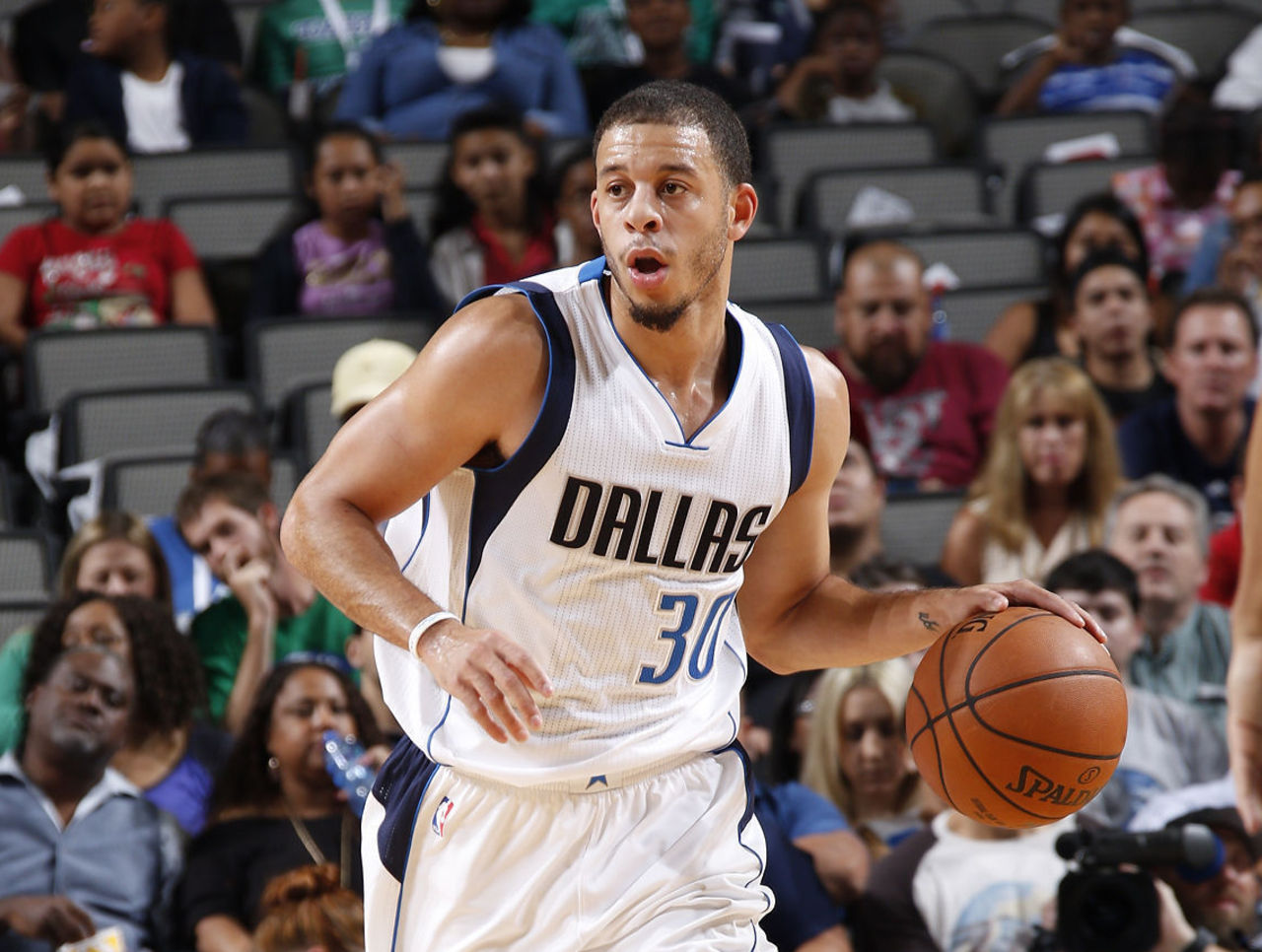Identifying a player's floor and ceiling in daily fantasy
Follow theScore's fantasy feed on Twitter (@theScoreFantasy) for the latest news, features and more.
Floor and ceiling are terms that get thrown around quite regularly in daily fantasy, and it often depends on perspective as to what they precisely indicate. The lowest possible outcome is not a player's floor. If this were the case, every player would have the same floor: zero or a negative.
When referring to a player's floor, it's generally looking at the usual baseline one can expect, eliminating the worst examples but also ignoring the odd explosion above the norm. Determining an accurate floor requires data, and is mostly looking at average production.
For example, Indiana Pacers SF Paul George scored 23.1 points per game, but that's not really a great way of determining his floor even though that is a solid number he would reach with consistency. If he scored 35 points one night and only 11 the next, he'd average 23 points.
Instead, it's important to look at a string of games. At the beginning of the season, this is difficult because you only have access to previous years' statistics, which does not take changes in scheme, strategy, roster, injury, or age into account. Only as the season progresses do a player's floor or ceiling become more predictable.

A good indicator of whether or not a player will reach his floor is through minutes. George played 81 games in 2015-16. He played fewer than 20 minutes only twice while playing over 40 nine times. In 61 games, he played between 30 and 39 minutes. It's to be expected that his minutes floor is in that range.
Pinpointing an exact number is impossible, so we need to go with ranges. George had one of the steadiest floors because his minutes were like clockwork. As such, he was rarely going to score fewer than 20 points. His ceiling was a different story. His ceiling was a points-and-rebounds double-double.
This kind of production kept George's ceiling, and fantasy upside, relatively low compared to other superstars like Oklahoma City Thunder PG Russell Westbrook, who had 18 triple-doubles while George had 15 double-doubles.
Westbrook's ability to score, pass and scoop up rebounds with consistency also brought his floor way up. Chances are, however, that Westbrook's daily fantasy salary will consistently be much higher than George's. Factoring salary into your decision is important. With Westbrook, his floor, while elite, was not enough on its own considering the shortages it creates at other positions.
Basically, no two floors are the same. It isn't as simple as looking at scoring, minutes, salary, or other averages as isolated numbers.
We've looked at a high-floor/low ceiling player like George and a high-floor/high ceiling player like Westbrook, but what about low-floor/high-ceiling option? These players usually see fluctuation in usage throughout the season, often coming off the bench or benefiting from changing roles due to injury or a teammate's ineffectiveness.

One example is Dallas Mavericks backup G Seth Curry. With the Sacramento Kings, the younger Curry saw his minutes expand near the end of the season, and there were several elite performances relative to his generally low salary, which corrected just a bit too late. Even if Curry was in the lineup, for most of the season he was far from a lock to return value.
When rostering a player of Westbrook's caliber in a tournament, you need to pick players like Curry pre-salary-jump. This is achieved by monitoring lineups day-of, knowing who's getting rested and who's injured and seeing opportunity based on matchups.
Keep an eye on Houston Rockets SG Eric Gordon, who is expected to come off the bench, though he could get starts if PG Patrick Beverley's knee injury lingers. Gordon has never been a reserve, and has high scoring upside. If his salary is low, he'll be worth the occasional flier.
Similarly, aging veterans like Memphis Grizzlies G Vince Carter or Indiana Pacers C Al Jefferson will have rare evenings where they perform above expectations. Monitor minutes and opposing rosters to determine when to pull the trigger. More data will be needed before things crystallize on the upcoming season.